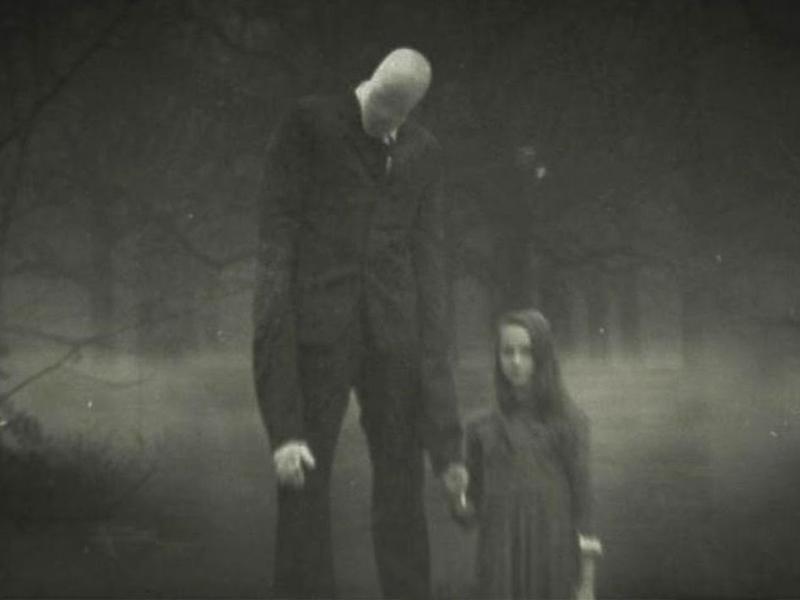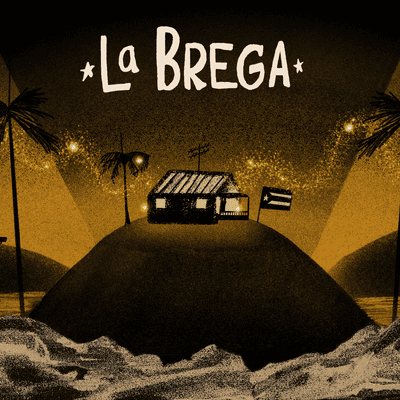The Terrifying Line Between Fact and Fiction Online

Alex Barron: I tend to think that real life is scary enough, especially these past few years, without having to gin up new scares for Halloween, but some of you I know have spent the whole month of October bingeing on scary stories, ghost stories, and zombie stories, and serial killers with saws and hockey masks and candy. Before that's all over, we've got another one for you. Here's staff writer, Andrew Marantz, on the horrors of the internet, real and imagined.
Andrew Marantz: Human beings have always liked scary stories and there is pleasure in a scary story that is totally made up in a hypothetical land far, far away. I think we all know from experience that the scariest story are the ones where you think, "Maybe some part of this could possibly be real." This is something we've understood throughout the history of telling scary stories. For example, one of the first horror novels was called The Castle of Otranto, it was published in 1764. It's obviously fictional, it's about a haunted castle in Italy, but there's this preface to the book where the author says actually what you're about to read is real.
Speaker 1: The following work was found in the library of an ancient Catholic family in the north of England. The scene is undoubtedly laid in some real castle.
Joe Ondrak: Then from there, you need trace a really rich history of every time there's been a new step in communication and mediation. Horror stories that have been that to play with it.
Andrew Marantz: This is Joe Ondrak. Joe is an expert in scary stories. In fact, he's working on a doctorate in them.
Joe Ondrak: You have the mass-produced popular novel and you have things like Dracula and the first edition of Frankenstein, which were both published as this [unintelligible 00:01:54] maybe facts, maybe fiction.
Speaker 2: The sun does not more certainly shine in the heavens and that which I now affirm is true.
Joe Ondrak: From that, you can trace it to things like the famous War of The Worlds broadcasting radio, which again was playing with it.
Speaker 3: [inaudible 00:02:12]
Joe Ondrak: Then most famously you have the Blair Witch Project and the revolution in handheld cameras.
Speaker 4: Oh, we're doing a documentary about the Blair Witch. Oh, have you heard of the Blair Witch?
Speaker 5: Oh, yes. That's an old, old story.
Joe Ondrak: My whole thing that I absolutely love with Sacks has always been this teasing at the boundary between fact and fiction and it just seemed like a natural progression to study Creepypasta.
Andrew Marantz: Let's just pause on that word for a second. The word Joe just said is Creepypasta. Yes, creepy as in scary pasta, as in noodles. It is admittedly a really silly word, but this is the internet. Often, totally silly words can refer to things that are actually worth paying attention to.
Joe Ondrak: The very, very basic version of Creepypasta is it is a form of horror fiction that is written on the internet for the internet.
Andrew Marantz: The way Creepypasta works is it uses things like social media or online forums, YouTube even, as tools in telling the story. Not only can you take it in by reading it or watching it, but you can also participate in it. If all that feels a little academic, maybe it's easier to just look at one concrete example, a Creepypasta that Joe really likes, it's called Candle Cove.
Joe Ondrak: Candle Cove is an interesting example because that one, it was originally published online as a fiction, so it was originally written by a chap named Kris Straub on his website.
Andrew Marantz: I have it. I just pulled it up here. Subject Candle Cove, local kids show. Does anyone remember this kid show? It was called Candle Cove and I must've been six or seven. It just starts like that.
Speaker 6: I never found reference to it anywhere, so I think it was on a local station around 1971 in 1972. I lived in Ironton at the--
Joe Ondrak: The original Candle Cove narrative in a nutshell is a message board exchange between a few different people reminiscing about a children's television show.
Speaker 7: Was it about pirates. I remember a pirate marionette at the mouth of a cave talking to a little girl.
Andrew Marantz: Again, just to be clear, this is a fictional story that is written in the form of message board discussions about a fictional TV show. As these characters are reminiscing about this show, they then start to remember these more and more upsetting details.
Speaker 7: The puppets and the marionettes were flailing spastically and just all screaming, screaming. The girl was just moaning and crying like she had been through hours of this.
Joe Ondrak: Before, at final twist that one of the forum members goes to visit his mom in a nursing home.
Speaker 8: I asked her about when I was little in the early '70s when I was eight or nine and if she remembered a kid's show, Candle Cove. She said she was surprised I could remember that and I asked why. She said, "Because I used to think it was so strange that you said I'm going to go watch Candle Cove now mom and then you would tune the TV to static and just watch dead air for 30 minutes. You had a big imagination with your little pirate show."
Andrew Marantz: Basically, some people read this story on this spooky website and either because they think it would be a funny joke or because they want to mess with themselves or for whatever reason people do things on the internet, they then copy that text, they go to some other website, which could be an actual web forum about actual old TV shows and they repost the story there. Then you start finding that the new people, the people who are newly exposed to this start to believe it.
Joe Ondrak: Yes, or at least start to give the appearance that they believe it. From that, a more interesting development happened, which is, as it gained popularity, people started to create videos of what they thought Candle Cove the show would actually look like.
[scary sounds]
Andrew Marantz: Suddenly, you have people creating a real show that you can actually watch on YouTube that looks like the fake show that was being described in that fictional, scary story.
Joe Ondrak: That's the moment where things really start to get destabilized in terms of facts or fiction.
Speaker 9: Because in some sense then there is a TV show or a video or something called Candle Cove that does exist in the world. To that point, as you say, trying to participate in stories or warp the boundaries between fact and fiction is as old as the horror genre itself. What about the internet gives people new tools to play with those boundaries that didn't exist in film or novels or whatever?
Joe Ondrak: One of the big ones is that the networks, internet, purports to give this immediacy in interaction between people. It's a communications medium, first and foremost, that is direct between different real people. The spreads versions of Candle Cove that were posted to various different forums, they looked entirely like another real person's real posts and experiences. Social media, the internet in general, produces such a volume of information that we have to rely on what's essentially an implicit social contract that what is on there is representative of our real lives or truthful to a certain extent.
Creepypasta leverages this trust in order to derive its effect. It's horror scare comes from the fact that we can't verify every piece of information out there and we have to trust that to a certain extent what is on there is true.
Andrew Marantz: Here's where our scary story about scary stories actually starts to get a lot scarier. In addition to being a grad student studying Creepypasta, you also have a day job, is that right?
Joe Ondrak: I am head of investigations for a company called Logically. We are a tech company that deals specifically with disinformation campaigns and fake news and navigating information in the social media landscape that is today.
Speaker 10: Probably not what most literature PhDs end up working in?
Joe Ondrak: Not really, but I somehow managed to bridge that gap and it's been a pretty seamless transition.
Andrew Marantz: Logically is one of many companies that have recently cropped up that try to combat the spread of hate and disinformation online. This was a whole industry that didn't really exist 10 years ago and is now a pretty big deal.
Joe Ondrak: In 2016, just as I was about to start my PhD, the term fake news became front page news. I realized that they are using the exact same mechanics in the exact same ways in which people engage with fictions to get people to believe far more malicious things.
Andrew Marantz: What about them looks similar and what are the dynamics that you recognize?
Joe Ondrak: Creepypasta is interactive because you cannot only read it but you can then choose to copy and paste it and tell it yourself. The same thing could be true of a disinformation narrative. Things like claims around COVID cures or various different claims from take any conspiracy theory of your pick really. When we encounter it for the first time, what we see is 95% of the time not going to be the origin of that particular claim or that particular narrative. It's more than likely going to have been adjusted or remixed through the lens of whoever's been posting it and that gets to a second aspect of overlap, which is the obscuring of origin.
A good Creepypasta is one that you encounter 30 spreads away from the original poster. Whereas disinformation campaigns will do their best to obscure any seed post or origin around it. Again, they take off when people are repeating it and spreading it and remixing it for their own receptive audiences. Now, a good example of this is the Frazzledrip narrative.
Andrew Marantz: That's another weird word. The word is Frazzledrip. It's just a made up word that was supposedly the name of a video file found buried on Anthony Weiner's computer hard drive, Frazzledrip.
Joe Ondrak: It's this rumored video of Hillary Clinton conducting an actual child sacrifice. QAnon talks about Hillary Clinton being part of this satanic pedophile elites. The story is told almost as a Creepypasta by believers of QAnon. It's either, "Oh, I saw this video," or, "My friends saw this video." Then they describe it in graphic and intense detail.
Speaker 11: What exactly could bring hardened NYPD detectives to vomit and cry just reading some details as cause for nightmares, truly horrific nightmares. No one wants to see this video.
Andrew Marantz: There were already a lot of people who hated Hillary Clinton, but if you were a person who hated Hillary Clinton and then you came across a very specific story like Frazzledrip and it's one that is using all the same literary techniques that we have been talking about to make you believe that not only is Hillary Clinton politically bad but she's literally a Satan-worshiping child trafficker. That is the kind of thing that can really heighten the urgency of the situation. Now, you're not just someone who wants to talk about how much you dislike Hillary, but you could become someone who thinks there's a crisis happening in the real world and that you need to go out and do something about it.
Think Pizzagate or think January 6th. For people who are sitting at home going, "What can we do about this?" Do you think that you guys can fix it or what's the next step here?
Joe Ondrak: I don't think fixing it is on the cards. We at Logically and other initiatives to combat disinformation can help people recognize and navigate this sheer amount of information online the way in which to say, because often the root doesn't lie with considering it as information, it lies in considering it as narratives that people would want to believe and will then repeat, embody, and then tell others. The larger question then around fixing this issue becomes, why do these people want to believe this?
Andrew Marantz: It can be frustrating or baffling, frankly, to think about how anyone could believe such obviously false things that Hillary Clinton, Oprah, and Tom Hanks are all in some satanic cult together or whatever the conspiracy theory is. Talking to Joe made me think that it might be less important whether a story is true than whether it's engaging. Whether it hooks into our mind, whether it's enjoyable to think about or play around with. As Joe said, this way of blurring the line between fiction and reality, it's a great way to make a scary story more enjoyable, more participatory. The internet has made those lines extremely blurry.
At this point, you can pretty much live inside a largely fictional universe. You can tell yourself that your opponents are actually inhuman monsters and that boring everyday politics is actually a showdown between the eternal forces of good and evil. Now, in most cases, that's probably not true, but it might be engaging. Once you're fully engaged in that story, it might start to seem sensible to do something really drastic or even violent. That is a very scary story, one that happens to be true.
[music]
Alex Barron: Andrew Marantz is a staff writer for The New Yorker and his book on online extremism is called Antisocial. We also heard from Joe Ondrak who's a researcher for the tech company, Logically.
Copyright © 2021 New York Public Radio. All rights reserved. Visit our website terms of use at www.wnyc.org for further information.
New York Public Radio transcripts are created on a rush deadline, often by contractors. This text may not be in its final form and may be updated or revised in the future. Accuracy and availability may vary. The authoritative record of programming is the audio record.





